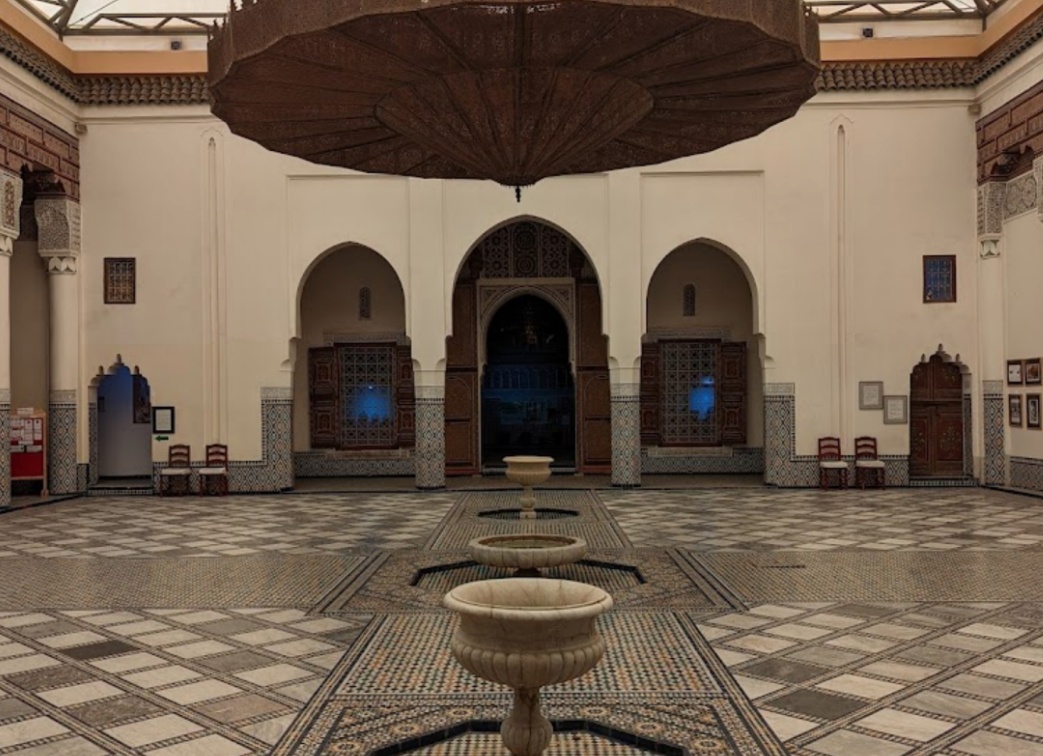Marrakech Museum: A Treasure Trove of Moroccan Art and History
Table of Contents
Introduction to Marrakech Museum
Housed in the heart of the old city, the Marrakech Museum stands as a beacon of culture and history in one of Morocco’s most vibrant cities. Located in the Dar Menebhi Palace, built at the end of the 19th century by Mehdi Menebhi, the museum was restored and converted into a museum in 1997. Today, it serves not only as a custodian of Moroccan heritage but also as a center for cultural exchange and artistic expression. A visit to the Marrakech Museum offers a deep dive into the rich tapestry of Moroccan art, architecture, and history, presented within the stunning setting of one of Marrakech’s most beautiful palaces.
Historical Significance of Dar Menebhi Palace
The Dar Menebhi Palace, which houses the Marrakech Museum, is itself a piece of Moroccan history. Designed in the style of a traditional Moroccan palace with Andalusian influences, it features a central courtyard, intricate zellij tile work, ornate wooden carvings, and expansive arches that exemplify Moroccan architectural finesse. The palace was meticulously restored to preserve its historical integrity while providing a suitable environment for the museum’s collections.
Collections and Exhibits
The Marrakech Museum’s collections encompass a wide range of artifacts that celebrate Morocco’s cultural heritage. The museum is renowned for its diverse assortment of ceramics, jewelry, costumes, and arms from various periods of Moroccan history, each telling its own story of the craftsmanship and aesthetic sensibilities of the time. The museum also houses contemporary art exhibitions, which provide a platform for modern Moroccan artists and serve as a dialogue between the past and the present.
The Art of Islamic Calligraphy and Coins
One of the highlights of the Marrakech Museum is its impressive collection of Islamic calligraphy, an art form that holds significant cultural and religious importance in Morocco. The museum showcases a variety of scripts, each piece a testament to the skill and spiritual devotion of its creator. Alongside these are displays of historic coins, which not only served as currency but also as indicators of the political and economic climates of their times.
Moroccan Carpets: Weaving History
Another significant aspect of the museum’s collection is its array of traditional Moroccan carpets. These carpets are renowned worldwide for their vibrant colors and intricate patterns, each region of Morocco offering a distinct style and weaving technique. The museum’s collection provides insights into the social and economic contexts in which these carpets were made, as well as the personal stories of the weavers themselves.
The Majorelle Gallery
The Majorelle Gallery within the Marrakech Museum is dedicated to the work of French painter Jacques Majorelle, who spent much of his life in Marrakech and is best known for the Majorelle Garden. The gallery features a selection of his paintings, which are notable for their vibrant colors and ethereal representations of Moroccan life and landscapes. This gallery not only honors Majorelle’s artistic legacy but also highlights the influence of Morocco on his work.
Educational Programs and Cultural Outreach
The Marrakech Museum is committed to its role as an educational institution. It offers a range of workshops, lectures, and interactive programs designed to engage both locals and tourists. These programs often focus on specific aspects of Moroccan culture, such as traditional crafts or the Arabic language, offering participants a hands-on learning experience that deepens their appreciation of Moroccan heritage.
Architectural Splendor
The architecture of the museum itself is one of its greatest attractions. Visitors are often captivated by the beauty of the palace’s architecture, from the grand courtyard, with its stunning tiled floor and central fountain, to the intricately decorated ceilings and expansive arches. The building is a masterpiece of traditional Moroccan design, providing a fitting backdrop for the treasures it houses.
Visitor Experience
The Marrakech Museum is open to the public daily, offering guided tours in multiple languages to enrich the visitor experience. The museum’s central location in the medina makes it easily accessible, but its surroundings can be a labyrinth for first-time visitors. It is recommended to consider a guided tour of the medina that includes a stop at the museum for a comprehensive understanding of its context within the broader history of Marrakech.
Conclusion
The Marrakech Museum is more than just a repository of artifacts; it is a vibrant center for the appreciation and understanding of Moroccan culture and history. It offers visitors a unique blend of the past and present through its exhibits and educational programs, all within the stunning setting of a historic palace. Whether you are a history buff, art lover, or simply curious about Moroccan culture, the Marrakech Museum provides a deep and enriching experience that captures the essence of Morocco’s rich heritage.
Additional Resources
For those interested in exploring more about Moroccan culture and history, the nearby Dar Si Said Museum offers insights into the traditional crafts and artistic heritage that define the region, while the House of Photography provides a visual journey through Morocco’s historical landscapes and cityscapes. Together, these institutions paint a comprehensive picture of Morocco’s artistic and cultural heritage.




Dar Si Said Museum: A Portal To Moroccan Art And Heritage - Private Driver Morocco
[…] to other notable landmarks that highlight the city’s artistic and historical diversity. The Marrakech Museum, housed in the exquisite Dar Menebhi Palace, offers a deep dive into Moroccan art and architecture […]